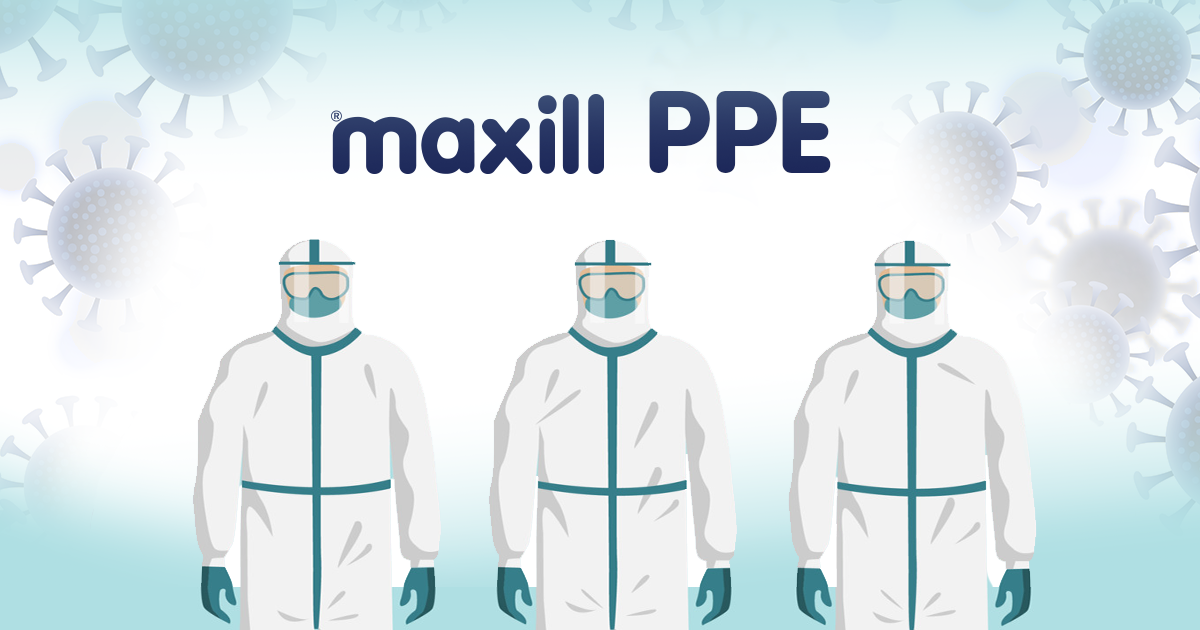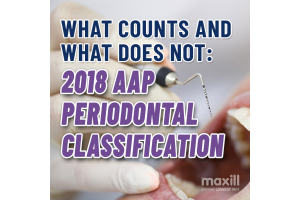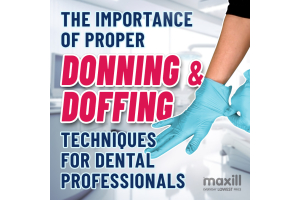Understanding PPE in the Dental Office: Safeguarding Health Through Protective Equipment

Personal Protective Equipment (PPE) encompasses specialized gear and attire designed to safeguard individuals from various hazards present in their work environment. In essence, PPE serves as a protective shield, mitigating the risks associated with exposure to physical, chemical, biological, or other harmful elements.
Its primary purpose lies in providing a barrier between the wearer and potential sources of injury, illness, or infection. In a dental office, where practitioners frequently interact with bodily fluids, aerosols, and potentially infectious materials, PPE plays a pivotal role in preventing the transmission of pathogens between patients and dental staff.
By donning specific equipment such as gloves, masks, eye protection, and gowns, dental professionals create a robust defense against cross-contamination. This practice not only safeguards their own health but also upholds the well-being of patients, minimizing the risk of infection transmission during procedures.
The meaning and significance of PPE extend beyond mere attire; it symbolizes a commitment to safety, a professional responsibility to uphold stringent hygiene standards, and an unwavering dedication to ensuring the welfare of both patients and healthcare providers. Through the correct selection, utilization, and disposal of PPE, dental offices maintain a safe and controlled environment conducive to optimal patient care and infection prevention.
Types of PPE in a Dental Office
Gloves
In the realm of infection control within a dental office, gloves stand as the frontline defense against microbial transmission. Their critical role lies not only in protecting dental practitioners but also in safeguarding patients from potential cross-contamination.
Purpose and Varieties:
Gloves, typically made from latex, nitrile, or vinyl, serve as a protective barrier, shielding against direct contact with bodily fluids, pathogens, and chemicals. Each material offers distinct benefits. Latex gloves, known for their elasticity and comfort, were once the norm but have seen a decline due to allergies. Nitrile gloves, hypoallergenic and durable, have developed as a preferred alternative. Vinyl gloves, though less resistant to punctures, suit duties that need a looser fit.
Proper Usage and Disposal:
The efficacy of gloves hinges on their correct usage. It's important to don gloves just before patient contact and promptly discard them afterward. Changing gloves between patients, procedures, or even different tasks during a procedure is essential to minimize cross-contamination. Proper disposal, following established protocols, ensures the safe removal of possibly contaminated gloves, lowering the risk of transmission.
Fit and Functionality:
A glove's fit plays a fundamental role in its effectiveness. Snug but comfortable, the glove should allow dexterity without compromising protection. Dental duties vary in nature, meaning some clinicians may require different glove types – thicker gloves for heavy-duty tasks such as lab work or sterilization, and thinner ones for delicate manipulations, such as intra-oral treatment.
Advancing Hygiene Through Innovation:
In recent times, technological advancements have augmented glove functionality. Some gloves now incorporate antimicrobial properties or indicators that reveal breaches, enhancing safety protocols within dental practices.
Gloves remain an indispensable component of Personal Protective Equipment in dental offices, emblematic of a commitment to infection control and patient safety. Their proper usage, coupled with meticulous adherence to disposal guidelines, serves as a cornerstone in maintaining a hygienic environment.
Masks
Masks stand as a crucial line of defense against airborne pathogens and microorganisms. Their function extends beyond ordinary physical barriers, serving as a vital shield that aids in preventing the transmission of respiratory droplets and aerosols throughout dental procedures.
Purpose and Types:
Masks play a pivotal role in reducing the risk of inhaling or spreading infectious agents. In dental practices, two fundamental types of masks find notoriety: surgical masks and N95 respirators. Surgical masks, regularly worn by dental professionals, act as a protective barrier against larger particles and fluid splashes, while N95 masks or respirators, with their sophisticated filtration efficiency, offer enhanced protection against smaller airborne particles.
Proper Use and Disposal:
The effectiveness of masks hinges on their proper usage. Prior to donning a mask, ensuring clean hands, and securely covering both the mouth and nose are crucial. Regular and proper disposal of single-use masks after each patient interaction or when visibly soiled is necessary to prevent contamination. It's vital to follow established disposal practices, stressing the importance of disposing of masks in designated waste receptacles to minimize the risk of accidental exposure.
Fit and Functionality:
The fit of a mask significantly effects its functionality. A snug yet comfortable fit ensures proper coverage without compromising comfort or breathability during prolonged use. Dental tasks often involve numerous movements and postures; therefore, masks should allow for unrestricted interaction and movement without compromising their protective qualities. Ensuring masks fit appropriately around the nose and mouth, paired with secure fastening, enhances their efficacy in filtration.
Adapting to New Challenges:
The evolution of masks continues to evolve. Innovative features such as improved filtration materials, adjustable straps for a customized fit, and antifog coatings have emerged, catering to the specific needs of dental clinicians. These improvements aim to increase mask functionality while addressing common challenges faced during extended use in dental settings.
Masks, a cornerstone of PPE in dental offices, are pivotal in reducing the transmission of respiratory droplets and aerosols. Their correct choice, fit, and disposal, coupled with adherence to established guidelines, not only ensure the protection and safety of dental practitioners but also strengthen infection control measures, creating a safe atmosphere for both patients and healthcare professionals.
Eye Protection
In the spectrum of Personal Protective Equipment (PPE) within a dental office, eye protection stands as an indispensable defense against potential ocular threats. Given the nature of dental procedures involving aerosols, splashes, splatters, and airborne particles, protecting the eyes becomes vital to ensure the safety of dental practitioners.
Impact and Types:
Eye protection in dental settings comes in many forms, including safety glasses and face shields. Safety glasses, snugly fitting around the eyes, create a protective cover, shielding against direct splashes or sprays. Face shields, offering broader coverage, guarding not only the eyes but also the entire face from potential hazards, making them particularly useful during procedures with a higher risk of fluid exposure.
Functionality and Comfort:
The functionality of eye protection lies not only in its ability to create a physical barrier but also in providing comfort during use. Optimal eye protection should offer unobstructed vision and a comfortable fit without compromising stability. Adjustable straps and cushioned frames contribute to enhanced wearability, ensuring that practitioners can perform intricate tasks comfortably while maintaining clear visibility.
Mitigating Risks and Enhancing Safety:
Dental procedures often involve high-speed instruments and various materials that can generate airborne particles or splatter. Properly worn eye protection mitigates the risk of ocular injury or exposure to infectious agents. Additionally, some eye protection options feature anti-fog coatings or ventilation systems, reducing instances of fogging and ensuring continuous clarity during procedures.
Adherence to Best Practices:
Adhering to best practices in utilizing eye protection is imperative. Prior to any patient interaction, ensuring that eye protection is clean and free from scratches or damage is essential. Regular cleaning and disinfection between patient procedures uphold hygiene standards, reducing the risk of contamination and maintaining optical clarity.
Eye protection, a fundamental component of PPE in dental settings, serves as an essential barrier against potential ocular hazards. Through its correct selection, comfortable fit, and meticulous maintenance, eye protection not only shields dental professionals from ocular threats but also reinforces the commitment to maintaining a safe and secure environment for both practitioners and patients.
Gowns and Protective Attire
Within dental practices Personal Protective Equipment (PPE) such as gowns and protective attire play a pivotal role in creating an additional layer of defense against potential contaminants. These garments not only shield dental practitioners from bodily fluids and contaminants but also act as a barrier against inadvertent contact, fostering a hygienic work environment.
Purpose and Distinctions:
Gowns in dental offices can be categorized as disposable or washable. Disposable gowns, usually made from non-woven materials, provide a single-use protective layer during procedures prone to fluid exposure. Washable gowns, crafted from durable fabrics, offer a reusable option, often preferred for routine tasks where minimal fluid exposure is expected, reducing overall waste.
Protection and Comfort:
The primary function of gowns lies in their ability to protect against splashes, sprays, and contaminants. Disposable gowns, while lightweight and convenient, offer limited reuse and are designed for single-patient use to prevent cross-contamination. Washable gowns, on the other hand, provide durability and can withstand multiple cycles of laundering, ensuring long-term usage with proper maintenance.
Adherence to Hygiene Standards:
Proper donning and doffing protocols ensure the efficacy of gowns. Before patient contact, putting on a clean gown is essential, covering the body adequately to minimize exposure. Post-procedure, disposing of disposable gowns or appropriately laundering washable ones is crucial to maintain hygiene standards and prevent potential transmission between patients.
Considerations for Selection:
The choice between disposable and washable gowns often depends on the nature of dental procedures. Procedures with a higher risk of fluid exposure might necessitate disposable gowns for optimal protection, while routine tasks may allow for the use of washable gowns, promoting sustainability without compromising safety.
Gowns and protective attire, a crucial facet of PPE in dental settings, fortify the barrier against potential contaminants. Their selection, based on procedural requirements and hygiene standards, not only shields dental professionals but also upholds the commitment to maintaining a safe and hygienic environment conducive to optimal patient care.
Conclusion
In dental care, Personal Protective Equipment (PPE) transcends its role as mere attire; it embodies a vital shield against a wealth of potential hazards. Each component of PPE—gloves, masks, eye protection, gowns—stands as a guardian, shielding against contamination and protecting the health of both practitioners and patients. Beyond being a physical barrier, PPE signifies a commitment to professionalism, hygiene, and an unwavering dedication to ensure a safe environment within dental clinics. With proper usage, disposal, and maintenance protocols, dental professionals reinforce their armor against infectious agents and potential risks, making sure not only their safety but also building and maintaining an atmosphere conducive to optimal patient care. PPE continues to be a cornerstone in dentistry, symbolizing the constant commitment to health and safety that defines modern dental practices today.











